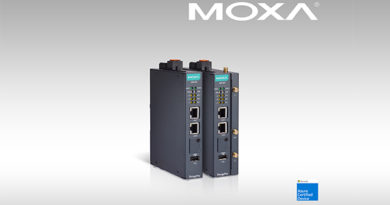Are you building a data driven culture?
Implementing a data-driven culture is the key to unlocking your organisations full AI potential. Becoming a “data-driven organization” needs to first address – where would you even get the data you need to get started? Truth is that your business already has the data; you only need to equip your people to use it effectively.
By harnessing and organizing your existing data, identifying, and overcoming common roadblocks, and enabling each department to bake data into their foundational decisions, is where you can start making a meaningful cultural change.
How do you think large corporations like Apple, Amazon, Google, and Facebook all became some of the biggest companies in the history of the world? By recognizing the importance of data—capturing data at volume and then leveraging it to its full extent by fundamentally integrating data into their business strategies, culture, and processes.
And it doesn’t stop with collecting data. It’s about how you use the gathered data to drive profitability and make a tangible impact. It’s likely that your organization already generates enough data to do this. In the 2023 Frictionless AI Survey, 78% of respondents indicated they feel their organization is able to use existing data to improve business performance. Now, it’s a matter of using it properly, rather than just letting it sit there.
Perhaps the biggest piece of the data-driven culture puzzle is the people. Creating a data-driven culture involves change for both data people and non-data people; the later need to become a bigger part of the data strategy. So, as you embark on building a data-driven culture, don’t leave “regular” people out of your plans – they’re essential to bring data science closer to the business.
Like we just mentioned, most organizations already collect the data they need to become data-driven (or have access to it). So, what’s the hold up? Unfortunately, it’s not that simple. Enterprises, especially established ones, encounter a lot of friction along the way. While they want to mature their data capabilities to keep up with higher data volume and more demand, at the same time, they’re struggling with legacy data environments, processes, and cultural mindsets. Messy and disorganised data, a skills gap, and a stagnant employee mentality and company culture, all contribute as roadblocks in your path to becoming a “data-driven enterprise”.
The answer to these challenges starts with leadership. It starts right there at the top.
Dresner’s recent report cited that the presence of formal data leadership within an organization significantly increased the likelihood of support for a data literacy program. And with data literacy comes increased proof of data’s value, greater buy-in, better results… all those good things.
This is followed with getting your data organized by addressing the concerns of scalability, portability, and operationalization, of your data architecture. And if you don’t get “regular” people involved in data projects, you won’t be able to produce the results you want. Structuring your data projects to involve non-data scientists means you get more collaboration, better feedback, and more impactful results. But, to create a true data-driven culture, it’s about more than just getting people involved in processes.
As for the pesky skills gap, that can be well taken care of with upskilling, and adopting a platform that works for everyone. While upskilling ensures that all your employees have the knowledge they need to use data science and machine learning to product top results for the business, and a platform that supports everyone is an essential part of a data-driven organisation. Altair RapidMiner, our data analytics and AI platform, provides the technology your organisation can rely on.
And most importantly, have patience. Reinventing company culture doesn’t happen overnight. Don’t underestimate the amount of time, focus, commitment, and persistence needed to successfully develop and implement a data-driven culture. Only to increase the odds, start where there is a critical business need, rethink how you view and use data, and stay committed.
Embedding data-driven decision-making into the organization does more than just create a data-driven culture—it’s also key for enterprises to establish a competitive advantage, optimize processes, and attack inefficiencies.
Teaching employees how to use the tools you implement and encouraging them to buy into the vision of transforming the organization with data science should be an essential part of your AI strategy. At Altair, we like to think of the perfect recipe as investing in the right team, creating a culture that optimizes their expertise, and making the most of your data. Creating a data-driven culture, bringing in tools that support your entire team, and encouraging collaboration will increase data literacy, which will thus create a positive impact on the business.
Read more at A Leader’s Guide to Building a Data-Driven Culture.

Download the Altair Frictionless AI Global Survey Report 2023
Join us at the the global virtual event ATCx – AI for Engineers to hear from the best in class share their journey to a data-driven enterprise.


